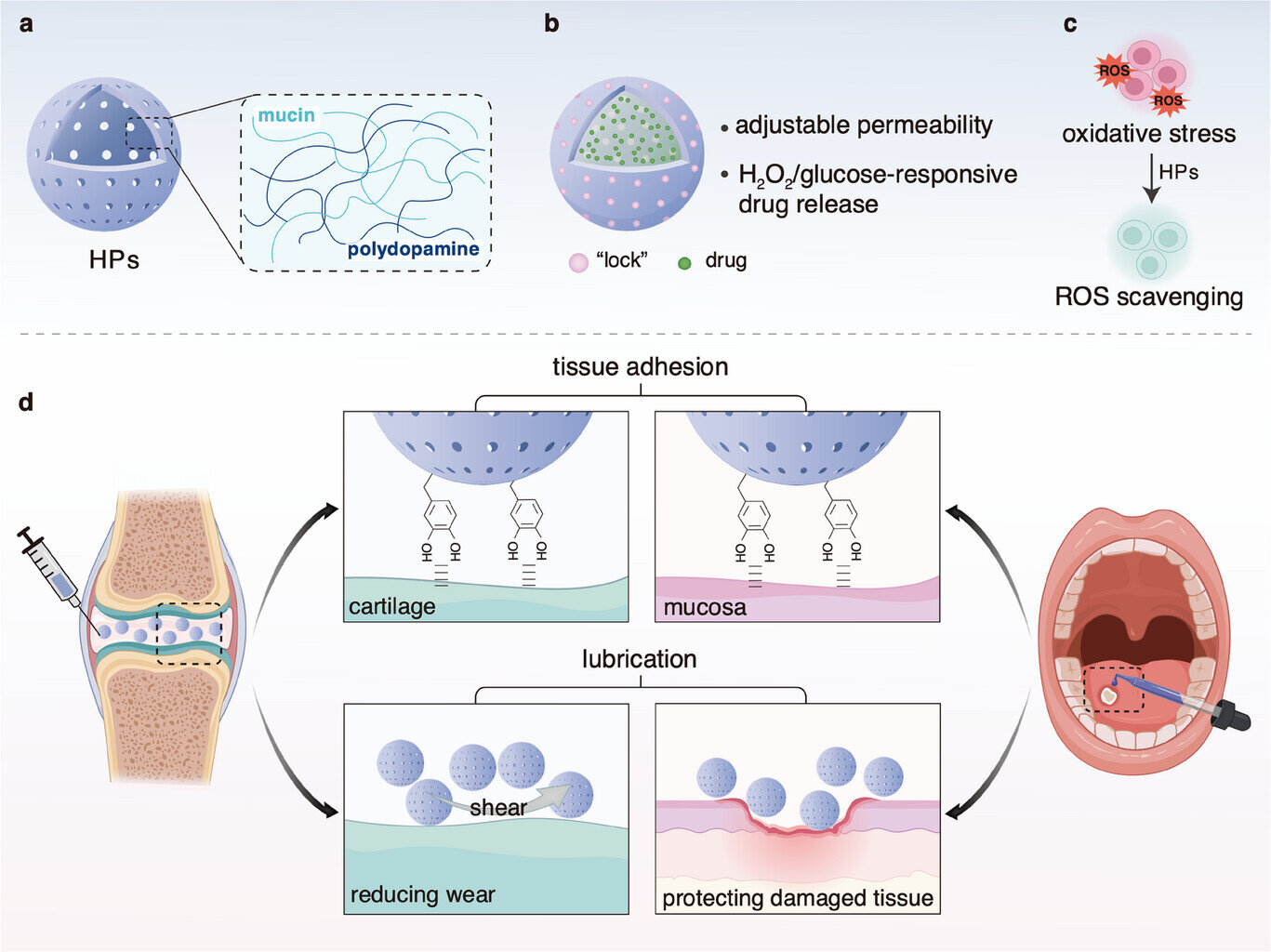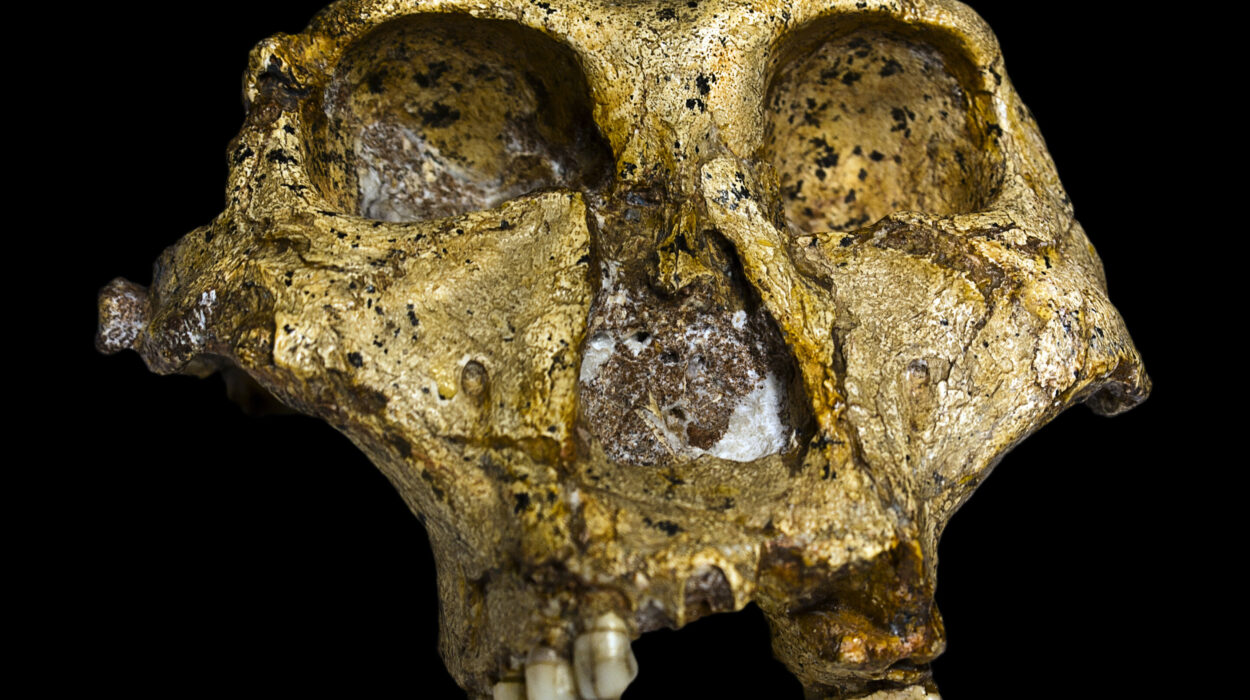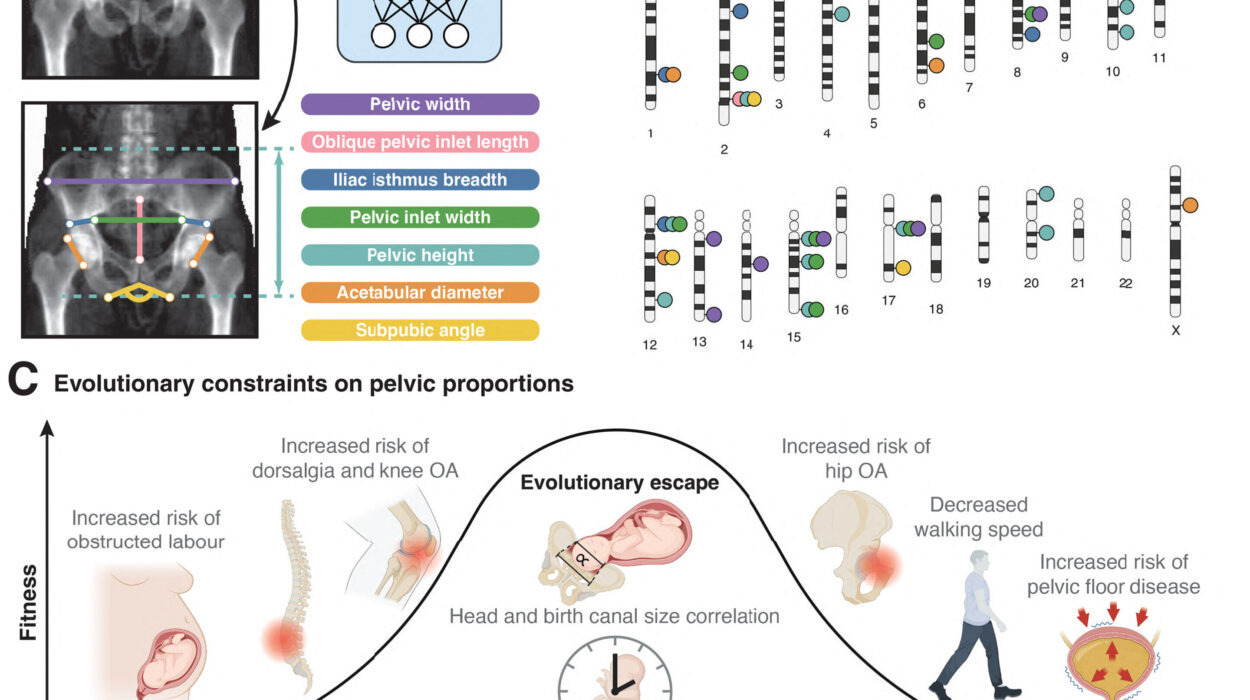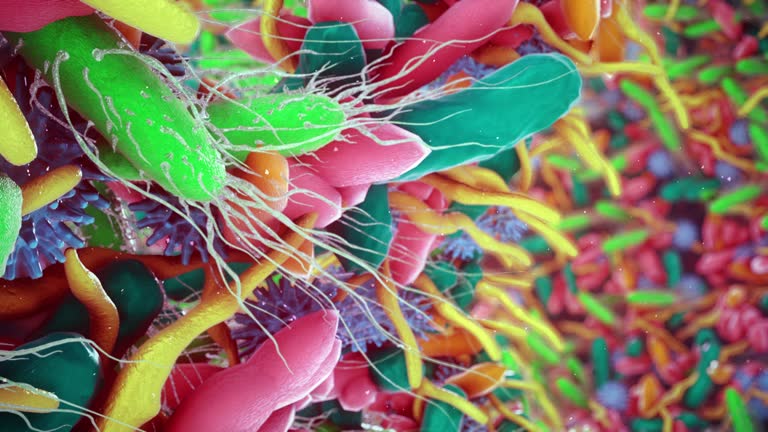In the hidden landscapes of our bodies—joints that creak with every step, mouths that heal after every bite, tissues constantly under stress—medicine often struggles to reach its destination. The challenge is not only in creating powerful drugs but also in delivering them exactly where they are needed, and keeping them there long enough to make a difference.
Now, researchers at the Technical University of Munich (TUM) have designed an elegant solution: hollow microspheres made of mucus and polydopamine. These tiny capsules, no bigger than the width of a human hair, are like miniature packages that can carry therapeutic substances to fragile parts of the body. What makes them remarkable is their ability to adapt, stick where they are placed, and release their contents gradually over time.
This discovery, published in the journal Small, offers a glimpse into a future where treating joint diseases, oral injuries, or even cancer could become more precise, effective, and gentle.
Harnessing the Power of Mucus
At first glance, mucus may not seem like the hero of medical innovation. Yet inside our bodies, it is an unsung guardian. Mucins—the main building blocks of mucus—line our mouths, stomachs, and countless other tissues, forming slippery yet protective layers. These molecules provide lubrication, shield against pathogens, and help tissues withstand friction.
Professor Oliver Lieleg, who leads TUM’s Biopolymer Materials group, has long been fascinated by this natural defense system. By combining mucins with polydopamine, a substance inspired by the adhesive proteins of mussels, his team has created a new biomaterial that marries two powerful qualities: lubrication and stickiness.
The result is a microsphere that not only clings to tricky surfaces like cartilage or oral tissue but also protects those surfaces from damage. Imagine a tiny capsule that attaches to a wounded gum or a worn-out joint, delivering medicine while acting as a cushion against further harm.
Building Spheres of Healing
The production process for these microspheres is surprisingly straightforward. It begins with a temporary core that is coated with the desired materials. Once the core is removed, what remains is a hollow shell—an empty container waiting to be filled with medicine.
In many cases, such hollow structures collapse when the core is taken out. But with mucin and polydopamine, the spheres remain stable and porous. This porosity is a gift: it allows drug molecules to diffuse inside after the sphere has already been formed. Once loaded, the researchers add a thin sealing layer to close off the pores partially.
This clever sealing step means that the medicine doesn’t leak out immediately. Instead, the microsphere acts like a time-release capsule, slowly and steadily delivering its therapeutic cargo exactly where it is needed.
A Dual Personality: Healing or Destroying
One of the most striking aspects of these microspheres is their versatility. By changing the sealing material or the environment in which the spheres are used, their behavior shifts dramatically.
For example, when silver ions are added during the sealing process, the microspheres take on a destructive role. Silver is toxic to cells, which makes these capsules potential weapons against tumors. When released in a cancerous environment, they could deliver drugs while also helping kill malignant cells.
Without silver ions, however, the story is entirely different. In this case, the anti-inflammatory properties of polydopamine dominate. Instead of killing cells, the spheres protect them, reducing stress and shielding tissue from further harm. This makes them ideal candidates for treating chronic inflammation, such as in osteoarthritis or stubborn wounds that refuse to heal.
The ability to switch between “protect” and “destroy” depending on material choice and biological setting makes these spheres a rare and powerful tool in biomedicine.
Applications in the Body
The potential uses for these microspheres span a wide range of medical fields. In joints, their lubricating and protective properties could reduce wear and tear, slowing the progression of diseases like arthritis while delivering pain-relieving or regenerative drugs. In the mouth, they could coat injured tissue, easing healing while releasing therapeutic compounds to fight infection or inflammation.
Because the spheres are hollow and can be loaded with different substances, they are not limited to a single kind of medicine. They could carry anti-inflammatory agents, painkillers, antibiotics, or even cancer drugs, depending on the patient’s needs. Their adaptability makes them more than just a delivery system—they are platforms for innovation, ready to be tailored to each challenge.
Simplicity and Scalability
Another important feature of this breakthrough is practicality. Complex biomedical technologies often stumble when moving from laboratory experiments to real-world use because they are expensive, fragile, or difficult to scale up.
These microspheres, however, are easy to produce in large quantities. Their structure is stable, their loading process is flexible, and their sealing step can be adapted to different applications. This simplicity means they stand a real chance of moving from academic research into clinical practice.
The Promise of a Versatile Future
The creation of mucus-based microspheres is not just about solving today’s problems; it’s about opening doors to future possibilities. They could become key players in personalized medicine, where treatments are designed to match the unique biology of each patient. Imagine a sphere tailored to release a custom drug combination in your joint, mouth, or even deeper tissues.
As project leader Oliver Lieleg explains, the combination of mucin and polydopamine “brings together many advantages beyond the typical tasks of a classical drug release system.” The spheres can shield, soothe, attack, or heal—depending on what the situation demands.
This versatility reflects a larger truth about biomedicine: the best innovations often come not from overpowering nature, but from learning to work with it. By borrowing the properties of mucus and mussels, the researchers at TUM have crafted a technology that feels organic, almost alive, in its adaptability.
A Glimpse Into Tomorrow
Every scientific breakthrough begins as an idea that sounds improbable. Mucus, the substance most people try to wipe away, may one day be central to healing. Tiny hollow spheres, invisible to the naked eye, may carry the medicines of tomorrow with greater precision than ever before.
The journey from laboratory to hospital is never short, but the foundation laid by this research is strong. With further development, these microspheres could become a common tool in fighting inflammation, healing wounds, protecting joints, and even tackling cancer.
What began as a curiosity about the properties of mucus has blossomed into a vision of medicine that is more targeted, adaptable, and humane. And as these hollow spheres find their place in the future of healthcare, they carry with them a simple but powerful idea: sometimes the smallest packages bring the greatest hope.
More information: Di Fan et al, Multi‐Functional Polydopamine‐Mucin Hollow Particles Provide Tunable Shell Permeability, ROS Scavenging, Tissue Adhesion, and Lubricity for Biomedical Applications, Small (2025). DOI: 10.1002/smll.202503238






